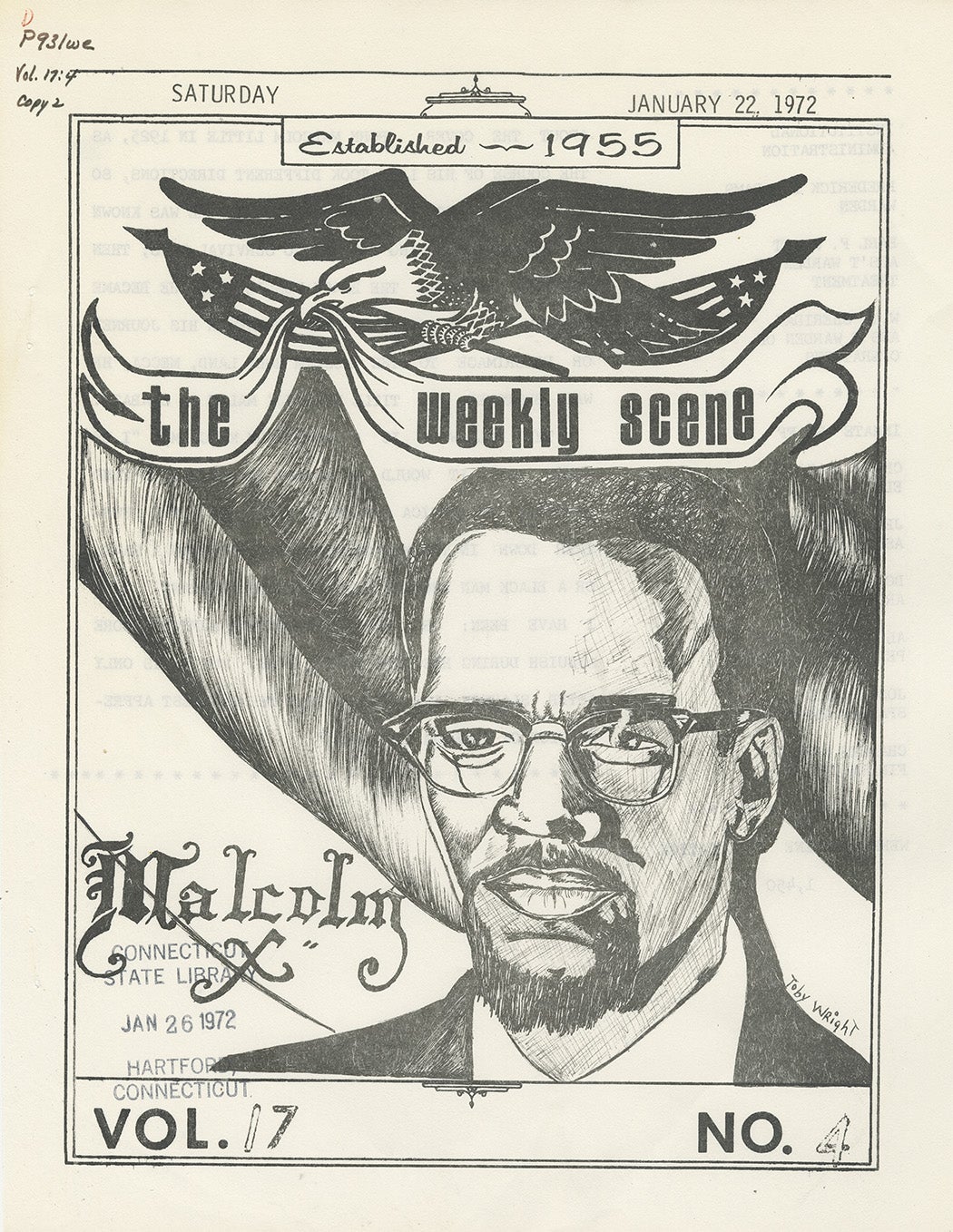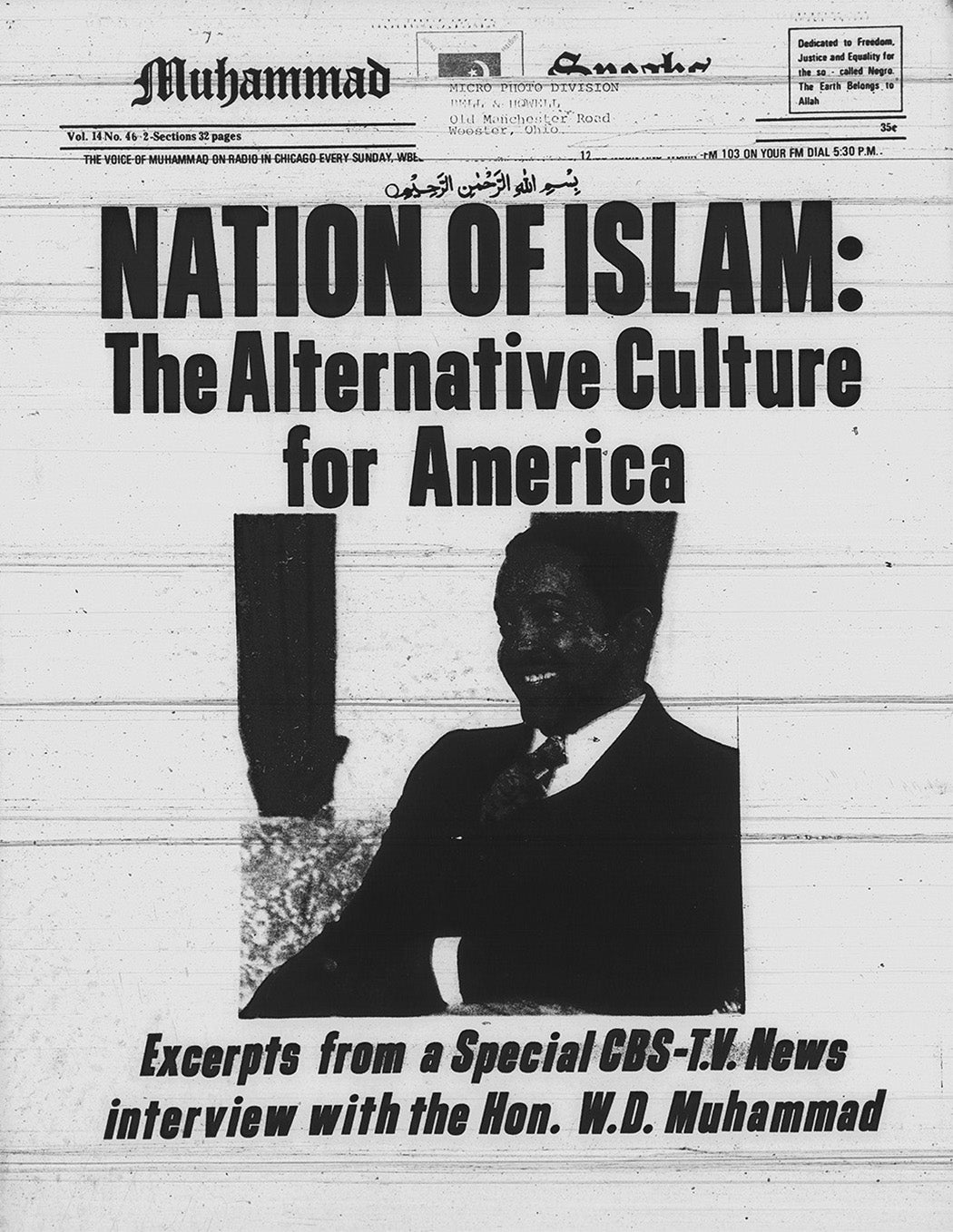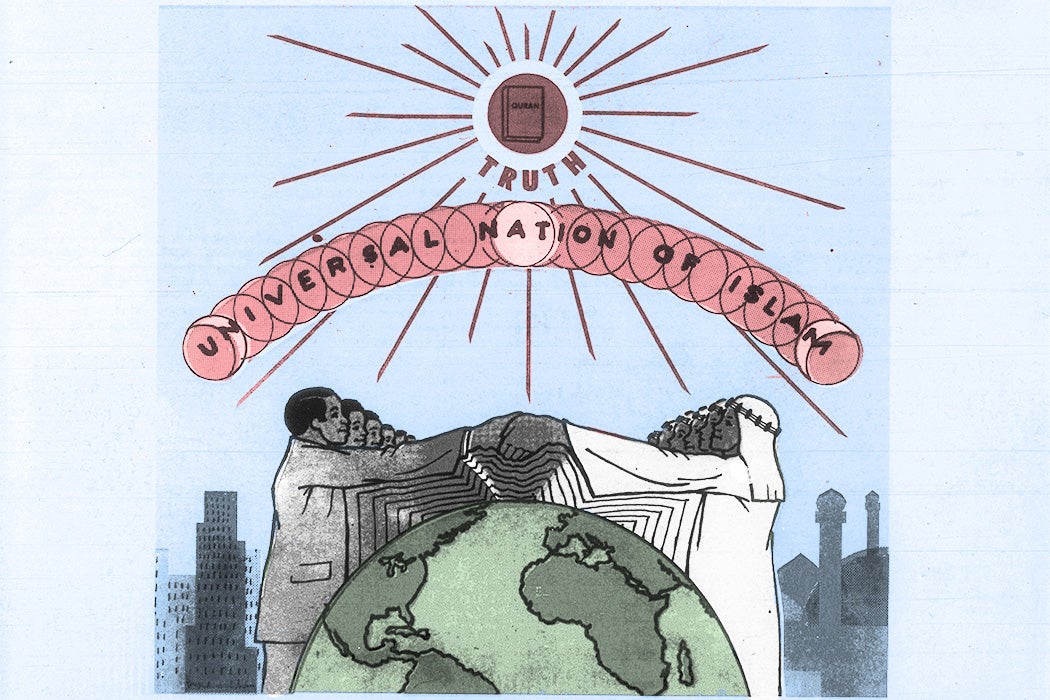Howard Ayers, a member of the Nation of Islam, grew up in Bedford-Stuyvesant, Brooklyn. In 1993 he was sentenced to 25-years-to-life in prison. Between 1968 and 1993 the prison population of the United States grew by 400%. Lawyer Thomas B. Marvell attributes this increase to legislators, who in response to rising fears, “established longer sentences or mandatory minimum sentences for wide varieties of crimes and criminals.” The ‘tough-on-crime’ ideology that emerged received broad bipartisan support, lending the way to President Bill Clinton’s ‘Three-Strikes Bill’, which mandated life imprisonment without possibility of parole for anyone who had committed a minimum of three violent felonies or, in some states, drug trafficking crimes.
Ayers has been to every maximum-security prison in New York State, including Attica Correctional Facility, where in 1994, he joined the Muhammad Prison Mosques, an iteration of the Nation inside prisons. In 1971, Attica was the site of one of the largest prison uprisings in history. In the interim years, it has been notorious for totalitarian-like surveillance of the people incarcerated within it. So perhaps it’s not surprising that Ayers found himself punished for his affiliation with NoI, which has been associated with radicalism, especially in prisons.
* * *
The Nation of Islam intertwined religion with politics long before the famed Attica Uprising. In 1963, for the first time, New York State prisons’ population was majority Black. In 1964, a landmark supreme court case Cooper v. Pate ruled that prison authorities must give equal treatment to imprisoned practitioners of different faiths; in other words, a Black man has a right to practice his Islamic faith in prison. As the prisoners’ rights movement expanded in the 1970s, broader racial and political tensions spilled into the nation’s jails and prisons. In a Journal of Black Studies article, Christopher E. Smith quotes C. Eric Lincoln’s characterization of the Black Muslim movement as “a dynamic social protest that moves upon a religious vehicle.”
Nation of Islam was influential in expanding rights for incarcerated people, both for Black Muslims and broader civil rights in prison. But, fearing another uprising and the ramifications of the group’s philosophies in general, authorities perceived it as a threat, in part because of its roots in organizing and activism.
Zoe Colley writes in the Journal of American Studies that the Nation of Islam was characterized by Jeffry Ogbar as the “chief inspiration” of the Black power movement and it is inextricably intertwined with the radicalism of the 1960s. She asserts that a narrow focus on the Nation of Islam’s impact on prisons alone is inadequate. “Historians dutifully acknowledge the group’s strong appeal to prisoners… but they rarely deviate from this standard narrative to consider the wider significance of the phenomenon.” That “wider significance” continues to be debated even today.
After the Attica uprising, New York prisons enacted a number of reforms, such as providing an alternative to pork for Muslims, more nutritious food, higher levels of accountability and transparency with the outside world, and a general reduction of the strict regime of discipline that was more or less carried over from the state’s 19th century invention, the Auburn System of corrections.
Weekly Newsletter
Ayers explained to JSTOR Daily that the version of the Nation that reemerged in prisons in 1996 was different from the one that existed in the 1960s. Prison authorities allowed this newer iteration of the religion under the condition that it act solely as a study group, Ayers explains. He asserts that there continue to be differences between the faith’s priorities and practices inside prisons versus outside. “Our concerns are not the same. We are dealing with how to survive inside,” said Ayers. He explains that the version of NoI in prisons acts as a guide to parole hearings, self-discipline, respect and responsibility, and life after incarceration.
* * *
The history of NoI’s growth, particularly among poor incarcerated Black men is well documented. “The prison temples help us to understand the strength of the NoI’s appeal within the very poorest black neighborhoods. Racked by terrible poverty, police brutality, and high levels of crime, these working-class communities experience the highest levels of male incarceration,” writes Zoe Colley in her article, All America Is a Prison: The Nation of Islam and the Politicization of African American Prisoners, 1955-1965. “Arrest and imprisonment was an experience shared by a large part of the NoI’s membership.”
In 1930 a clothing salesman in Detroit, Michigan named W.D. Fard Muhammad created NoI on the belief that Islam, stolen from Black people during slavery, was their original and true religion rather than Christianity, which the movement said “had bound them in both physical and mental chains.” Fard’s successor, Elijah Muhammad, taught “an original form of Islamic religion that interpreted historically Islamic traditions… and advocated separate Black businesses, schools, neighborhoods, and a state.”
Scholar Edward E. Curtis IV has written extensively on the ways in which NoI members study and live according to, “scientific and mathematical principles derived from their prophet’s cosmological, ontological, and eschatological teachings on the nature of God, the origins and destiny of the black race, and the beginning and end of white supremacy,” rather than according to a spiritual and supernatural understanding of God and religion. This empirical framework—combining Black nationalism and traditional Islam—through which NoI operates, has manifested in its lessons of self-discipline, strict codes of conduct, and socially conservative ethics. NoI and in particular its current leader, Louis Farrakhan, have espoused anti-Semitic, homophobic, and misogynistic views. Nonetheless it is also a religion with rules and structures that teaches its followers tools for resisting racist oppression. The complexity is undeniable.
* * *
Like Ayers, Malcom X joined NoI while incarcerated. He embraced the faith and diligently studied African American history, promoted Black nationalism, and practiced his oratorical skills. He quickly became a prominent leader, eventually becoming the National Representative of NoI. Although Malcolm X split from NoI in 1964, the Nation continued growing, while also continuing to be criticized for its controversial misogynistic, homophobic, and anti-Semitic views, and its evocations of violence.

Louis Farrakhan is perhaps best known for his organization of the Million Man March in 1995, which attracted hundreds of thousands of Black men and boys to DC to call for increased voter participation and to protest against gun violence. An undeniably successful grassroots organizer, Farrakhan also delves into hate speech and conspiracy theories. The Southern Poverty Law Center has designated the Nation of Islam a hate group, and the Anti-Defamation League call Farrakhan America’s leading anti-Semite. And yet, the version of Nation of Islam that thrives in prison seems to exist divorced from the controversies that dominate the discourse outside. As Ta-Nehisi Coates wrote in a 2001 essay, the Nation of Islam is a “bundle of contradictions.”
Ayers contends that NoI is more than a religion to those who are incarcerated— it is a form of resistance and a guide to life post-incarceration. “The Nation is so much more than a religion. It is a family. We protect each other, create bonds and communication that is peaceful. It is about inspiring people inside to take charge of their lives in a nonviolent, unbiased, positive way,” he said.
While serving as a New York State prisons NoI representative, Ayers mentored many men. One of them was Jarrell Daniels.
Daniels, now 27, spent ages 18 to 23 in upstate New York prisons. During his incarceration he says that he repeatedly filed grievances related to religious practice violations. Since the Prisoner Reform Litigation Act (PLRA) passed in 1995, it has been accused by scholars and advocates of facilitating civil rights abuses. Daniels recounts being threatened that if he did not rescind his grievances, he would be punished physically or placed in solitary confinement. Retaliation against incarcerated people for filing administrative grievances is illegal, though the PRLA’s arduous requirements make it challenging for incarcerated people to prove that their (mis)treatment on behalf of the prison was motivated by retaliation.
Daniels recalls that NoI taught him how to react calmly and patiently to correctional officers’ threats—nonviolently and through conflict de-escalation—as well as how to advocate for himself in parole hearings and later, job interviews. Daniels is on parole until 2023. At almost 28 years old, he has a 9pm to 7am curfew. The U.S. has over six million people on some form of criminal justice control, by far the most of any nation, by absolute numbers and by relative rate.
“What people don’t understand is that in prison the Nation does not emphasize all the religious ideology associated with the organization,” Daniels told JSTOR Daily. “It’s really about teaching life skills, like using effective communication, building emotional composure, motivating people to create a sustainable life plan post release and preparing men for parole and their eventual freedom. We are taught to look introspectively at our own life experiences and actions that have hindered us from leading healthy lives.”

Neither Daniels nor Ayers registered with the Nation after being released from prison, lending credence to the notion that NoI is neither strictly a religion nor strictly an ideology. “[Ayers] always told me the Nation was a like a bus. You got on at your stop and got off when you reached your destination,” Daniels said.
Membership within NoI takes a distinct form depending on whether the person is incarcerated or not, according to Ayers. Both involve attending sermons, but members inside recount not focusing as much on the religious aspects, like studying the Koran, as much as they did on practicing debate skills to prepare them for parole hearings.
“In the Nation we learned how to defend ourselves through advocating for our rights and not through violence. You learn how to file grievances and challenge facility policies that prevent people from exercising their liberties. It prepares you for life outside, but also inside. We are taught how to peacefully respond to abuse from guards and other acts of misconduct by correctional officers,” said Daniels. “I learned to build on the true essence of community development. My introduction to critical thinking, problem solving, and introductory knowledge of Black history was through Howard and the Nation,” he continued. Today, Daniels is studying African American Studies and African Diaspora Studies, with a concentration in sociology at Columbia University’s School of General Studies. His 2019 TED talk has over 2 million views and Daniels regularly travels to speak to young people and city officials about the toxicity of incarceration.
Black men go to prison at a rate substantially higher than that of white men. In 1990, one in four Black men was under some form of criminal justice control. In 2009, one in 10 men between the ages of 25 and 29 were incarcerated. Black men born today have a one in three likelihood of being incarcerated during their lifetimes. Recidivism rates across all races and ethnicities remain high, with 83.4% of people who were released in 2005 getting rearrested by 2014. Returning to prison after incarceration is more likely than not—so a program designed to prepare one for re-entry and reduce the future chance of arrest holds obvious appeal.
Public perception and misperception around NoI continue. Since the commencement of the War on Terror, acts of Islamophobia are on the rise. Black men (mostly), plus prison, plus Islam prove fertile ground for fear in the United States. Some past adherents to NoI have denounced it for its current leader’s antisemitic and problematic statements. Elsewhere, religious extremism and acts of domestic terrorism rise. No belief system or person, much like NoI and Howard Ayers, are static. All movements undergo progressions and adaptations. As noted in the American Prison Newspapers collection, NoI is “a community that is a living entity [which] often must follow such a process. The metamorphosis brings to the creature its wings, and with wings it has a greater sphere of movement.”
Mistreatment and abuse in prisons has far but ended, but Ayers and Daniels explain that the bonds made, and lessons learned through NoI inside prison, permeate in and outside of its walls. It will remain controversial in broader public discourse, but zoomed in, its members feel its benefits.
Support JSTOR Daily! Join our new membership program on Patreon today.







